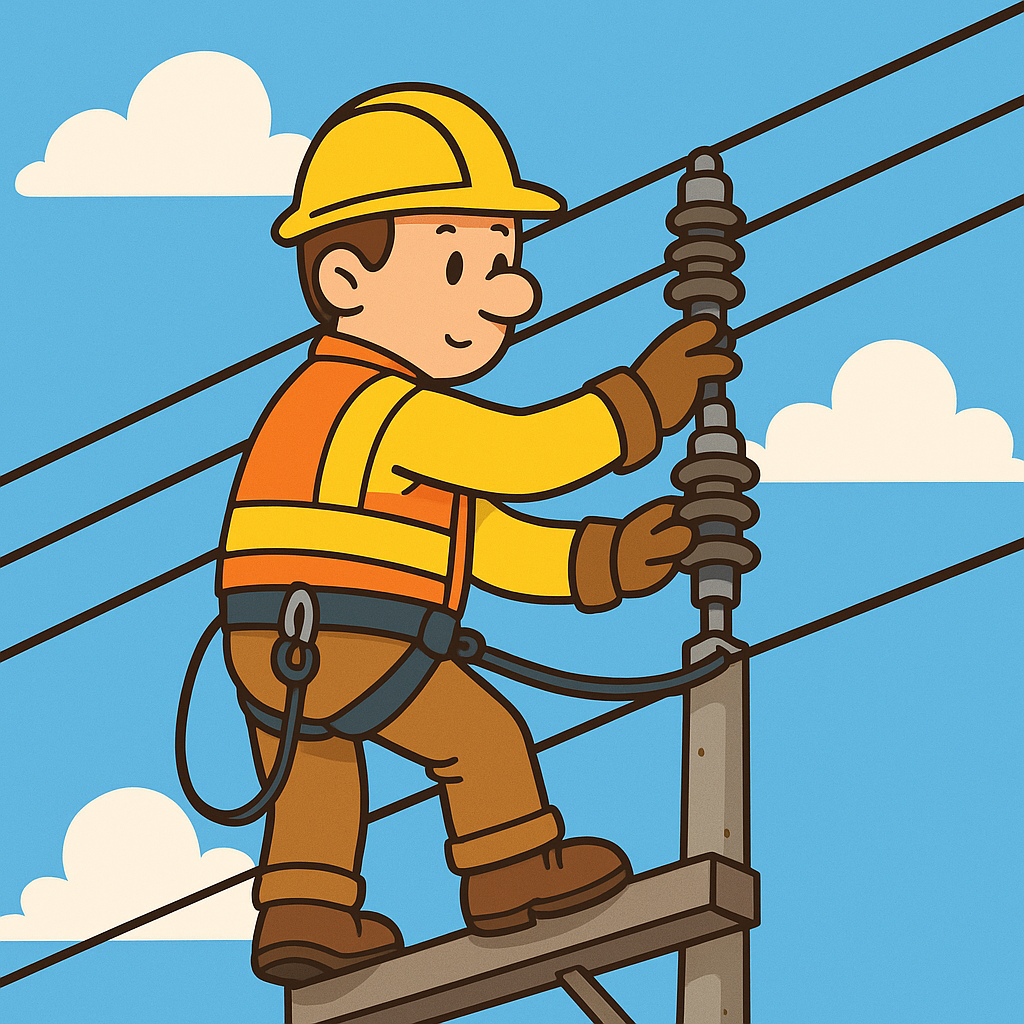
Branden Raczkowski
Oct 26, 2025
119
5 Essential Tips to Keep Lone Workers Safe
Lone workers, those operating in isolation or remote environments, are increasingly vulnerable to heat stress and overexertion. Without immediate assistance or supervision, these workers face heightened risks that can lead to serious health issues or even fatalities. Understanding these risks is crucial for safety professionals aiming to protect their teams. This article covers the background of lone workers and the risks they face, 5 essential safety tips for lone workers to help prevent incidents on the jobsite, and the importance of safety education when it comes to lone workers.
The History and Risks of Lone Workers
Lone working is not a modern phenomenon; it has been a part of various industries for decades. Historically, workers in sectors like agriculture, forestry, utilities, and construction often operated alone due to the nature of their tasks and the remote locations of their work sites. However, this isolation has always posed significant risks.
According to the National Institute for Occupational Safety and Health (NIOSH), lone workers are at a higher risk of fatal injuries compared to those working in teams. In 2021, according to the U.S. Bureau of Labor Statistics, over 5,000 fatal work injuries were reported in the United States, with a notable percentage involving lone workers. These fatalities often result from accidents, medical emergencies, or environmental hazards where immediate assistance is unavailable.
Industries such as agriculture, construction, and transportation have been identified as high-risk areas for lone workers. For instance, the construction sector alone accounted for 36% of all occupational heat-related deaths from 1992 to 2016. This statistic underscores the critical need for enhanced safety measures and protocols to protect these workers.
1. Implement Regular Check-Ins
The Risk: Lone workers often experience delayed response times in emergencies. In extreme heat, even a few minutes can make the difference between mild heat exhaustion and life-threatening heat stroke.
The Solution: Schedule structured check-ins and use communication tools that confirm a worker’s status. Technology like wearable sensors can provide automatic alerts if a worker stops moving or shows signs of physiological stress. Additionally, making sure that your communication tool can function in remote locations is imperative.
2. Monitor Environmental and Physiological Conditions
The Risk: Heat stress and overexertion are leading causes of injury among isolated workers. High temperatures, heavy PPE, and physical labor can elevate core body temperature rapidly, impairing judgment and increasing the likelihood of slips, trips, or falls.
The Solution: Use environmental monitoring tools such as WBGT (Wet Bulb Globe Temperature) meters or other environmental monitors and tracking physiological indicators like heart rate and core temperature. Setting thresholds allows supervisors to intervene before symptoms escalate.
3. Establish Emergency Response Protocols
The Risk: Lone workers are vulnerable in emergencies, from heat stroke to sudden medical events, because they can’t rely on nearby colleagues.
The Solution: Ensure every worker has access to emergency alert systems and clear protocols. This includes location tracking, panic buttons, or automated alerts triggered by physiological monitoring. Regularly refresh best practices with workers on how to respond if they or a colleague shows signs of heat-related illness or overexertion.
4. Provide Training and Awareness
The Risk: Workers may not recognize the early signs of heat stress or overexertion, leading to injuries, cognitive errors, or worse.
The Solution: Integrate heat stress education and overexertion awareness into safety training. Teach lone workers to recognize warning signs—dizziness, confusion, muscle cramps—and when to seek help or reduce workload. Incorporate case studies or real-world scenarios to make the lessons tangible.
5. Review Policies and Use Data to Improve Safety
The Risk: Without monitoring and analysis, organizations can’t identify patterns in heat-related incidents or overexertion injuries among lone workers.
The Solution: Track incidents, near misses, and environmental data to refine safety plans. Use findings to adjust rotation schedules, hydration protocols, or PPE requirements. Data-driven insights can reduce risks and improve overall workplace safety culture.
The Importance of Updating Safety Plans and Educating Teams
As industries evolve and new technologies emerge, it's imperative to continuously update safety plans to address the changing landscape of risks. Regularly reviewing and revising safety protocols ensures they remain relevant and effective in mitigating current hazards.
Engaging workers in safety education is equally crucial. When employees understand the rationale behind safety measures, they are more likely to adopt and adhere to them. Methods to achieve this include interactive training sessions, feedback loops, and involving workers in the development of safety policies.
Fostering a positive safety culture goes beyond compliance; it involves creating an environment where safety is prioritized, and employees feel empowered to contribute to safety initiatives. Encouraging open communication, recognizing safe behaviors, and providing avenues for workers to voice concerns can significantly enhance the overall safety culture.
Moreover, embracing new technologies, such as wearable physiological monitoring devices, can provide real-time data on workers' health and environmental conditions. Integrating these technologies into safety protocols allows for proactive interventions, reducing the risk of heat stress and overexertion among lone workers.
Conclusion:
Protecting lone workers from heat stress and overexertion requires proactive measures, including regular monitoring, proper hydration, and ensuring access to emergency assistance. By understanding and addressing these risks, safety professionals can better safeguard their most isolated workers before a small risk turns into a serious incident.
________________________________________
About SlateSafety
SlateSafety, a pioneering technology startup from Atlanta, GA, is paving the way in the Connected Safety revolution. They aim to deliver robust, trustworthy, and user-friendly safety systems to high-risk industrial settings, prioritizing the worker’s safety.
Their innovative product, BAND V2, epitomizes this, offering a wearable Industrial Internet of Things (IIoT) device designed to be worn on the arm. This device provides instantaneous alert notifications and examines historical data trends, enabling safety experts to step in before potential incidents occur and pinpoint operational inefficiencies in work processes.
BAND V2 was honored by TIME as one of the ‘Best Inventions of 2021’. In addition, SlateSafety has received more than $2M in funding from organizations such as the National Science Foundation and the United States Air Force to develop its IoT platform. For more information, visit slatesafety.com.

Share